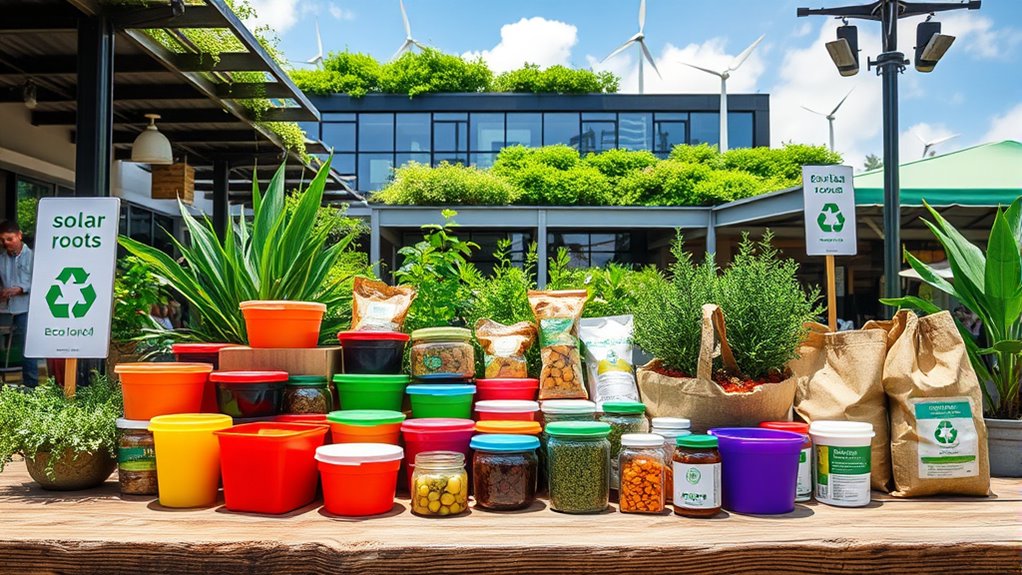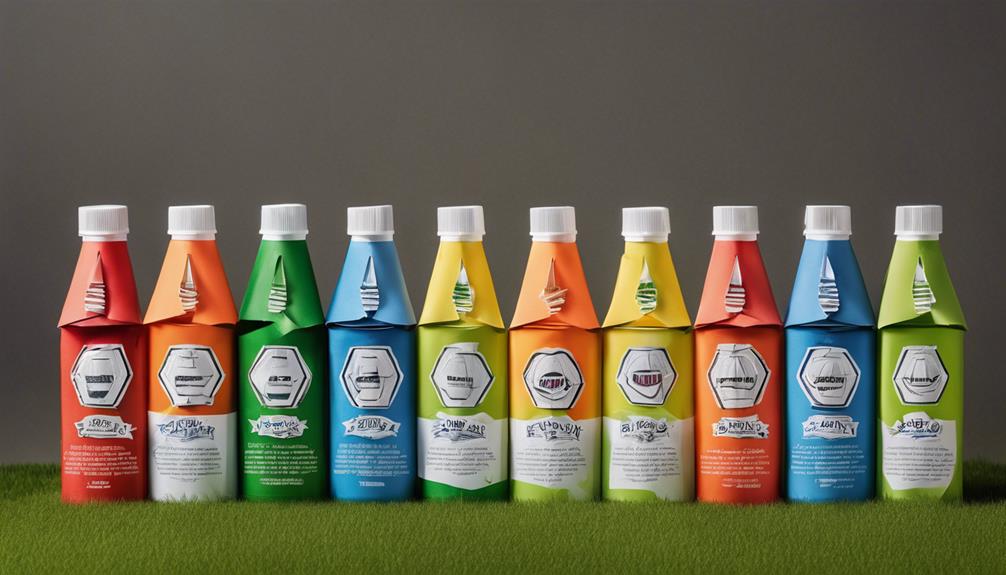Circular economies offer sustainable business models by focusing on resource efficiency, designing products that last, and emphasizing reuse and recycling. Instead of a linear “take, make, dispose” approach, you can create products with longer lifespans, support take-back programs, and use recycled materials. This approach helps reduce waste and environmental impact while opening new opportunities for innovation. If you want to learn how these principles can transform your business, keep exploring the core ideas behind circular economy strategies.
Key Takeaways
- Implement take-back programs and recycling initiatives to recover and reuse materials, reducing waste and resource extraction.
- Develop products from recycled or biodegradable materials to minimize environmental impact and support circular material flows.
- Adopt leasing or product-as-a-service models to extend product lifespan and promote reuse and repair.
- Design durable, repairable, and upgradable products to enhance longevity and reduce disposal needs.
- Incorporate resource-efficient manufacturing processes that optimize material use and reduce waste generation.

Have you ever wondered how we can reduce waste and make the most of our resources? The answer lies in embracing circular economies, which focus on designing out waste and keeping products in use longer. Waste reduction is central to this approach. Instead of following the traditional linear model—take, make, dispose—you shift your mindset to extend the product lifecycle. This means creating products that are durable, repairable, and upgradable, allowing them to serve you for a longer period before needing replacement. When products last longer, fewer resources are consumed, and less waste ends up in landfills. By prioritizing waste reduction through thoughtful design, you help conserve raw materials and decrease environmental impact.
In a circular economy, understanding the product lifecycle is essential. You consider every stage—from raw material extraction to manufacturing, usage, and disposal—and aim to close the loop at each step. For instance, during the design phase, you can choose materials that are recyclable or biodegradable, making it easier to recover valuable components at the end of the product’s life. During manufacturing, optimizing processes to generate less waste and using recycled materials further extends the product lifecycle. When consumers use the product, encouraging repair and reuse keeps it in circulation longer, reducing the need for new resources. Once the product reaches the end of its useful life, effective collection and recycling systems ensure that materials are recovered and reintroduced into the production cycle, minimizing waste. Additionally, understanding the genetic variation that causes unique traits, such as black coats in golden retrievers, highlights how natural diversity can be a resource for innovation and adaptation in various fields.
This approach challenges you to rethink how products are created and used. It’s not just about producing less waste but about designing systems where waste becomes a resource. For example, you might support companies that implement take-back programs or develop products made from recycled components. Additionally, embracing circular principles can lead to new business opportunities—such as leasing models or product-as-a-service—where the company retains ownership and responsibility for the product’s lifecycle. This incentivizes companies to build more durable, repairable goods, ultimately reducing waste and promoting sustainability.
Frequently Asked Questions
How Can Small Businesses Adopt Circular Economy Practices Cost-Effectively?
You can adopt circular economy practices cost-effectively by implementing recycling initiatives and focusing on resource efficiency. Start small by recycling packaging and materials, and look for ways to re-use resources within your operations. Partner with local organizations to share waste solutions, and invest in training staff to optimize resource use. These steps help reduce costs, minimize waste, and create a sustainable business model without significant upfront investments.
What Are the Main Challenges in Implementing Circular Supply Chains?
You face challenges like supply chain complexity and resource scarcity when implementing circular supply chains. Managing multiple suppliers, tracking materials, and coordinating logistics can get complicated quickly. Additionally, limited resources make it tough to source sustainable materials or invest in new infrastructure. To overcome these hurdles, focus on building strong partnerships, leveraging technology for transparency, and gradually integrating circular practices to make the progression smoother and more cost-effective.
How Do Circular Economies Impact Employment and Labor Markets?
Think of circular economies as a garden where every worker is a gardener. They create new jobs through workforce transformation and skill development, often replacing outdated roles with sustainable expertise. For example, as companies refurbish products, demand for skilled repair technicians grows. This shift can boost employment, but also requires workers to adapt and learn new skills, ensuring labor markets stay resilient and innovative in this evolving landscape.
What Role Do Consumers Play in Promoting Circular Business Models?
You play a crucial role in promoting circular business models through your consumer awareness and participation in recycling initiatives. By choosing sustainable products and properly recycling, you support companies that prioritize reuse and resource efficiency. Your demand for eco-friendly options encourages businesses to adopt circular practices, reducing waste and environmental impact. Active engagement in recycling initiatives and staying informed about sustainable choices help accelerate the shift toward a circular economy.
How Can Governments Incentivize Companies to Transition to Circular Economies?
Think of governments as the GPS guiding companies toward a circular economy. They can do this with policy incentives like tax breaks and grants, making sustainable choices easier. Strengthening regulatory frameworks guarantees companies follow eco-friendly standards. By aligning policies with environmental goals, you help steer businesses toward sustainable practices, turning the path to circularity into a smooth, well-marked road, and ultimately, a greener future for all.
Conclusion
Imagine your favorite gadget breaking down, but instead of tossing it away, you breathe new life into it, like turning old clothes into a cozy quilt. That’s the essence of circular economies—transforming waste into opportunity. By embracing these sustainable models, you’re not just saving resources; you’re creating a cycle of renewal. Just like a garden that flourishes with every turn of the compost, your choices can foster a healthier planet and a brighter future.










